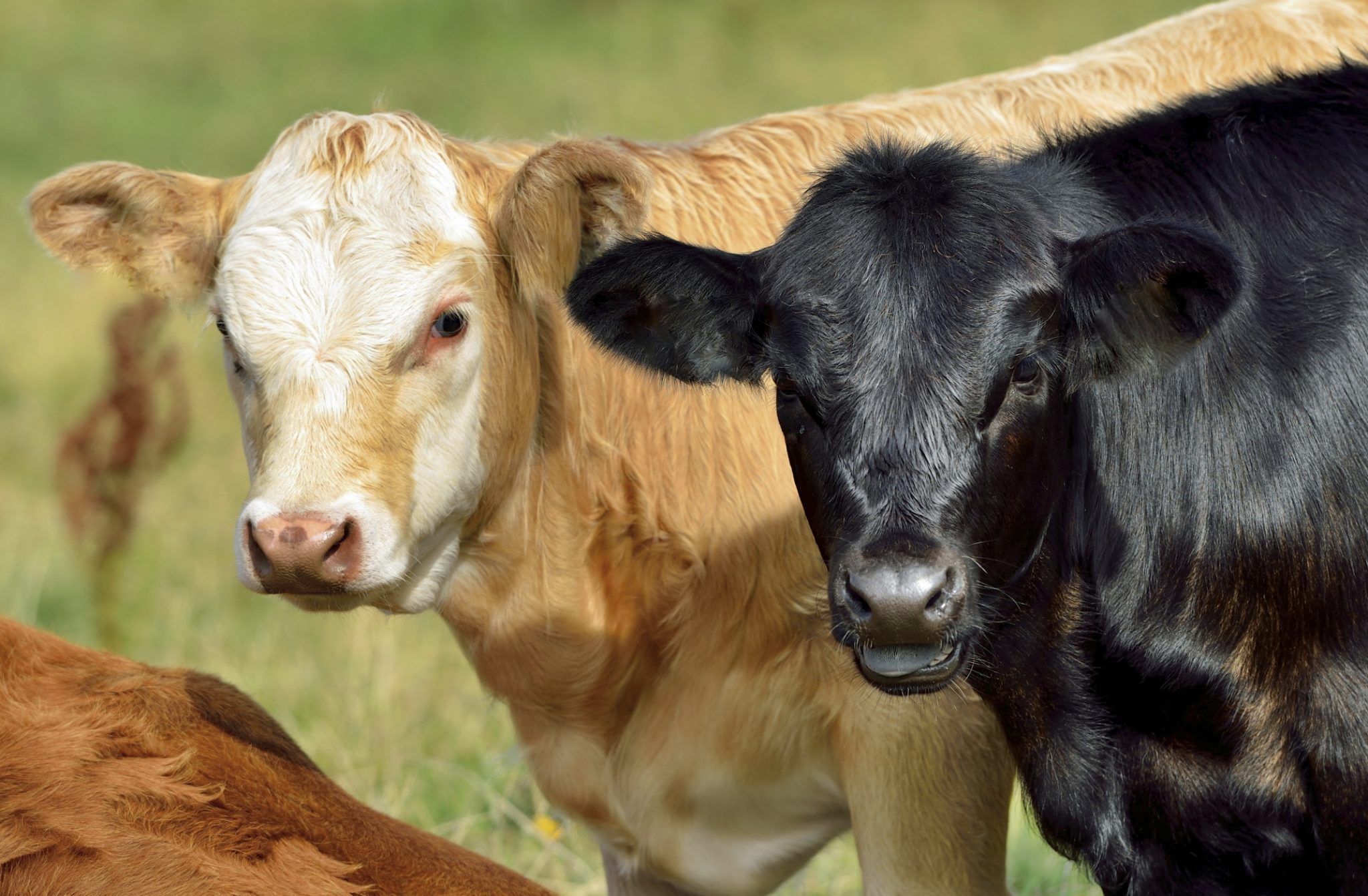Beef

When new calves are born and start growing, so does the threat of calf scours (diarrhea). A variety of infectious microorganisms, including bacteria (e.g., E. coli, Salmonella spp., Clostridium perfringens, Campylobacter ssp.), viruses (e.g., coronavirus, rotavirus, bovine viral diarrhea virus), and protozoal parasites (e.g., giardia, coccidia, Cryptosporidium spp.), are associated with calf scours.
Many of the infectious microorganisms associated with calf scours are commonly present on farms. However, exposure to these microorganisms does not always result in disease, because scours ultimately result from a combination of factors involving the calf, infectious microorganism(s), and the environment as illustrated in the examples below:
- Scours are often associated with multiple infectious microorganisms infecting a calf or group of calves at the same time. The higher the dose of organisms a calf is exposed to, the more likely the calf is to become ill. The amount of microorganisms in the environment reflects farm sanitation—or lack of sanitation (excessive mud, manure, etc.). Better sanitation results in less exposure to infectious microorganisms, thus reducing the incidence and severity of scours.
- A calf’s immunity helps protect it from disease and is the result of colostrum intake and proper functioning of its own immune system. Initially, a calf’s immune system does not function at full capacity, so a newborn calf depends on adequate colostrum intake for immune protection against a variety of microorganisms. Colostrum is the “first milk” produced by the cow after calving and contains a high concentration of maternal antibodies that the calf can absorb directly into its own system. These maternal antibodies are a calf’s passive protection against infectious organisms during the first few months of life while its own immune system is maturing to the point when it can provide active resistance.
- Stress can impair a calf’s immune system, resulting in susceptibility to many diseases, including scours.
Symptoms
Calves with scours develop mild to severe diarrhea. Mild cases o en do not need treatment and will resolve with time, but severe cases of scours are life threatening. The microorganisms that cause scours can attack the gastrointestinal system in different ways, but the end result is that the intestines do not work properly leading to a loss of fluid and electrolytes via the gut. Calves with scours can quickly become dehydrated and depleted of essential electrolytes. Since they are unable to adequately absorb nutrients through the intestines, they also become malnourished. Ultimately, calves with severe cases of scours will die if not treated promptly.
Prevention
Good farm sanitation. Good farm sanitation minimizes exposure to the common microorganisms associated with scours. Some things to consider would be to have cows calve in clean pastures (minimize mud and manure as much as possible) and periodically move cows that have not calved to unoccupied pastures. Moving the cows that have not calved to new pastures essentially recreates the cleaner conditions encountered in the beginning of the calving season. Also, moving hay rings to different areas of a pasture can help move cows to new locations within a pasture, thereby reducing mud and buildup of the infectious microorganisms.
Good-Quality Colostrum. Make sure calves ingest an adequate quantity of good-quality colostrum. Practically speaking, make sure cows are fed properly and are in good body condition several months prior to calving so they have the nutrition necessary to produce good-quality colostrum. A er calving, make sure the calf is able to stand and nurse within the first few hours. Cows only produce colostrum for a short time a er calving, and calves are best able to absorb colostrum within the first few hours after calving.
Vaccinations. Vaccinating cows before calving against the common infectious microorganisms associated with scours can also improve the quality of the colostrum.
Protection. Remove sick calves from the calving pasture to minimize exposing healthy calves to potential infectious microorganisms.
When do calves with scours need treatment?
Calves with scours that continue eating and running around the pasture probably do not need treatment, but when calves become noticeably ill, their health can deteriorate very quickly, and they can die if not treated appropriately. The decision to treat should be based on the assessment of four factors: general disposition, appetite, hydration status, and body temperature.
General disposition – Weak calves that are reluctant to move need attention.
Appetite – When a calf is not nursing, the cow’s udder will be distended more than usual.
Hydration status – Dehydration can be evaluated by pinching the skin on the side of the neck. In a well- hydrated calf, the skin snaps back into place quickly. If the calf is dehydrated, the skin takes longer to return to its original position. Also, as dehydration becomes severe, the eyeballs sink away from the eyelids.
Body temperature – Normal body temperature measured with a rectal thermometer is approximately 100 to 103 degrees F for a calf. Abnormally high or low temperatures may indicate the need for treatment.
Calves with severe scours can die quickly without the proper treatment, so if a calf’s general disposition, appetite, hydration status, or body temperature are not normal, contact your veterinarian for specific treatment recommendations.

